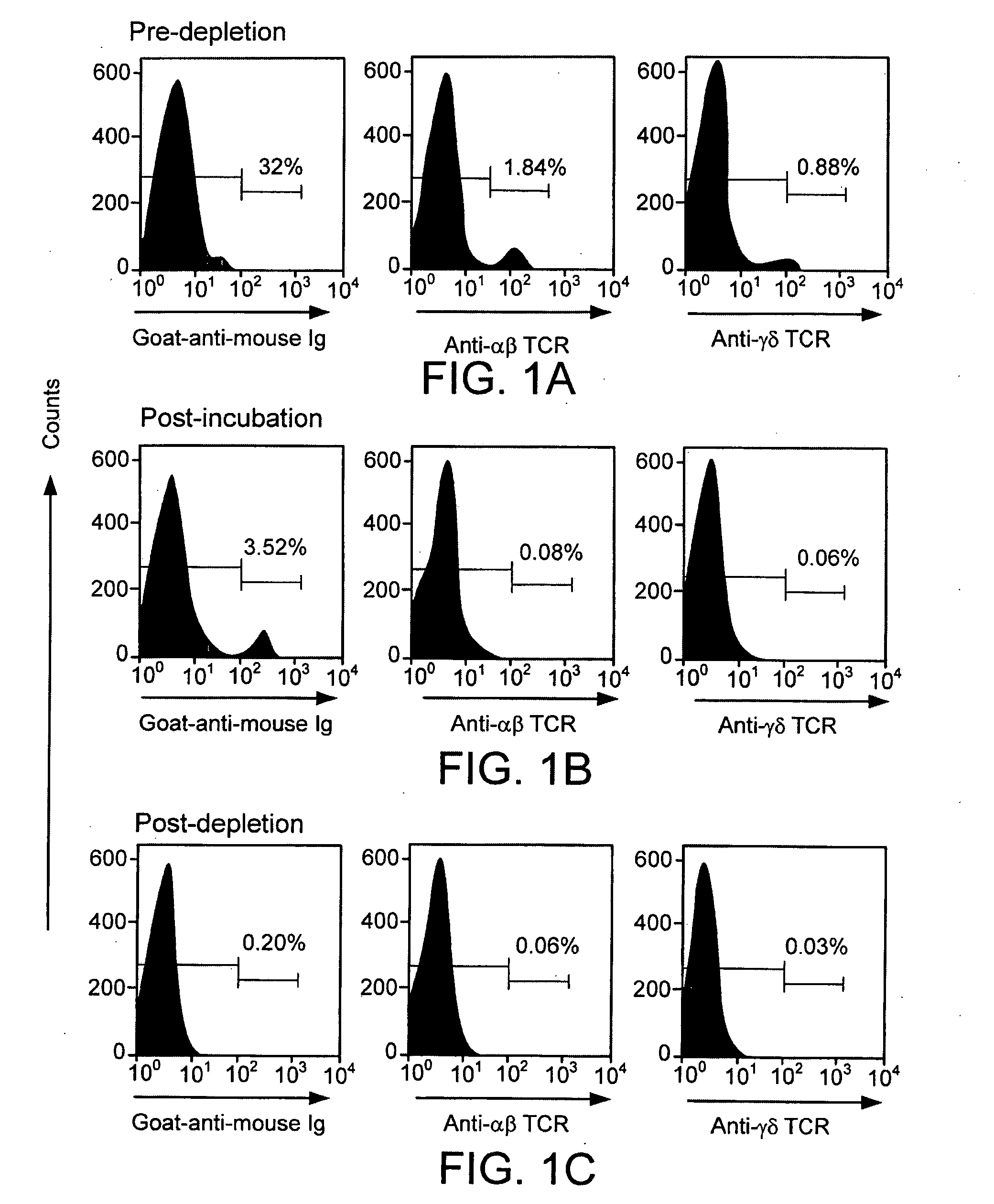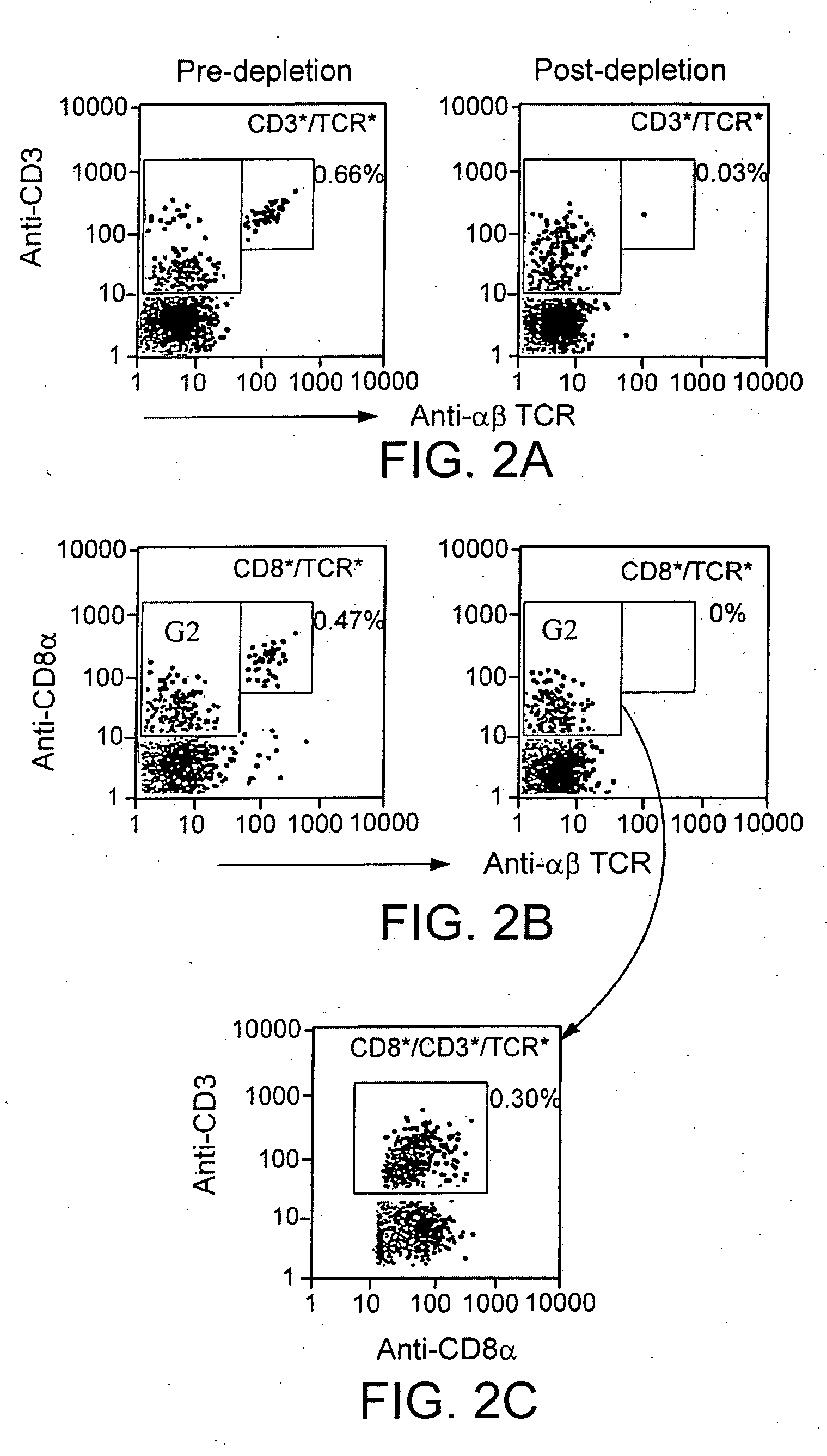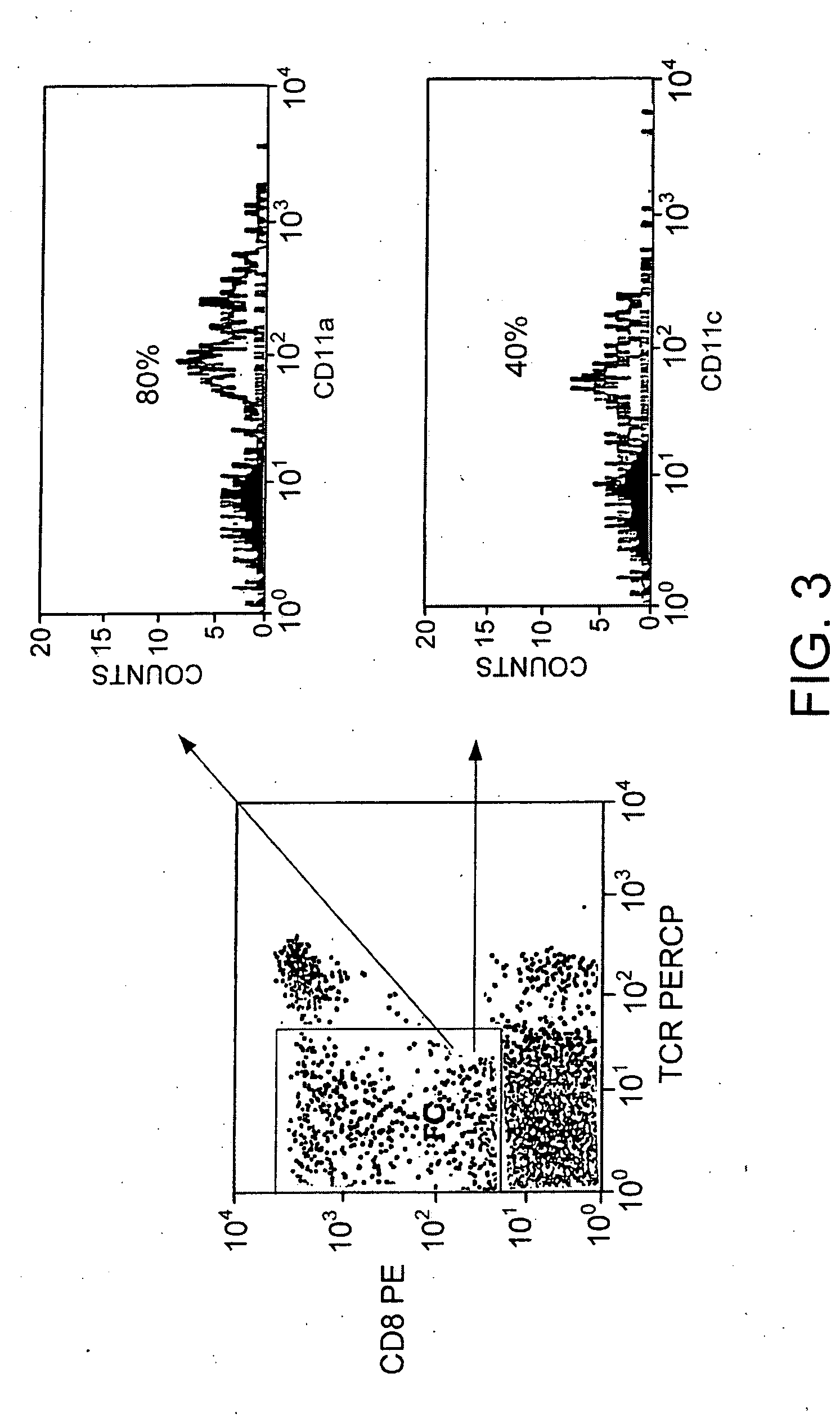Methods for increasing HSC graft efficiency
- Summary
- Abstract
- Description
- Claims
- Application Information
AI Technical Summary
Benefits of technology
Problems solved by technology
Method used
Image
Examples
example 1
Depletion of αβ- and γδ-TCR+ T-Cells from Rat Marrow does not Remove FC
[0174]αβ- and γδ-TCR+ T-cells comprise 2% to 4% of the rat marrow. TCD of ACI marrow reduced the proportion of αβ-TCR+ T-cells from 1.84%±0.99% to 0.06%±0.03%, and γδ-TCR+ T-cells from 0.88%±0.32% to 0.03%±0.02% (Table 1). FIG. 1 illustrates T-cell depletion of rat bone marrow. Adequacy of αβ- and γδ-TCR+ T-cell depletion was confirmed using anti-αβ-TCR FITC and anti-γδ-TCR PE or rat adsorbed goat anti-mouse Ig FITC mAbs pre-depletion (A), post-incubation (B) and post-depletion (C). Staining with these mabs demonstrated that αβ- and γδ-TCR+ T-cells had been effectively depleted.
TABLE 1Efficacy of T-cell depletion was confirmed by flow cytometryCells depletedfrom% T-cell of bone marrow (mean ± SD)aDonor marrowPre-depletionPost-depeltionαβ-TCR1.84 ± 0.990.06 ± 0.03γδ-TCR0.88 ± 0.320.03 ± 0.02αβ- and γδ-TCR3.40 ± 1.290.07 ± 0.01
aResults are expressed as the mean ± SD of at least 4 experiments
[0175] Efficacy of T...
example 2
Depletion of αβ- and γδ-TCR+ T-Cells from Donor Marrow does not Impair Allogeneic Engraftment
[0178] One hundred percent of recipient (WF) rats conditioned and transplanted with α⊕ and γδ-TCR+ T-cell depleted donor marrow engrafted as chimeras (Group C). All of the recipients exhibited stable mixed HSC chimerism with 3.4% to 88.8% of total peripheral lymphoid cells of donor derivation >6 months following BMT. Seventy-five percent and eighty-six percent of recipients transplanted with either αβ-TCR+ T-cell (Group A) or γδ-TCR+ T-cell (Group B) depleted donor marrow engrafted. The level of donor chimerism in Group A, Group B and Group C was 73.0%±8.3%, 92.3%±9.2% and 46.3%±32.8%, respectively (Table 2).
TABLE 2PBL typing of mixed allogeneic rat chimerasaBone marrow% Donor ChimerismDepletion of cellsengraftment(Mean ± SD)GroupNfrom bone marrow(n %)30 days90 daysA4αβ-TCR3(75%) 73 ±83.5 ± 6.6B7γδ-TCR6(86%)92.3 ± 9.294.3 ± 3.9C10αβ- and γδ-TCR10(100%)46.3 ± 32.8b51.1 ± 33.8D4UntreatedNA...
example 3
Depletion αβ- plus γδ-TCR+ T-Cells from Donor Marrow is Required to Prevent GVHD
[0180] To test whether donor αβ- or γδ-TCR+ T-cells would affect the occurrence of GVHD, chimeras were prepared with bone marrow that had been depleted of αβ-TCR+ (Group A), γδ-TCR+ (Group B), or both αβ- and γδ-TCR+ T-cells (Group C). Recipients of untreated marrow were prepared as controls (Group D). In Group D, all four rats conditioned and reconstituted with untreated ACI bone marrow exhibited clinical signs of severe acute GVHD. Three of these animals expired before 28 days due to GVHD. Histologic examination 28 days after BMT in one rat showed severe GVHD consistent with grade 3 in tongue (FIG. 4).
[0181] Tissues from animals in Groups A, B and C were collected for histologic assessment of GVHD at 30, 60, 90, 150, and 220 days post BMT. All samples were read blind. The results are summarized in FIG. 4. In Group A, one of the 4 animals exhibited clinical signs of severe GVHD and survived to 13 days...
PUM
| Property | Measurement | Unit |
|---|---|---|
| Cell angle | aaaaa | aaaaa |
| Efficiency | aaaaa | aaaaa |
Abstract
Description
Claims
Application Information
 Login to View More
Login to View More - R&D
- Intellectual Property
- Life Sciences
- Materials
- Tech Scout
- Unparalleled Data Quality
- Higher Quality Content
- 60% Fewer Hallucinations
Browse by: Latest US Patents, China's latest patents, Technical Efficacy Thesaurus, Application Domain, Technology Topic, Popular Technical Reports.
© 2025 PatSnap. All rights reserved.Legal|Privacy policy|Modern Slavery Act Transparency Statement|Sitemap|About US| Contact US: help@patsnap.com



